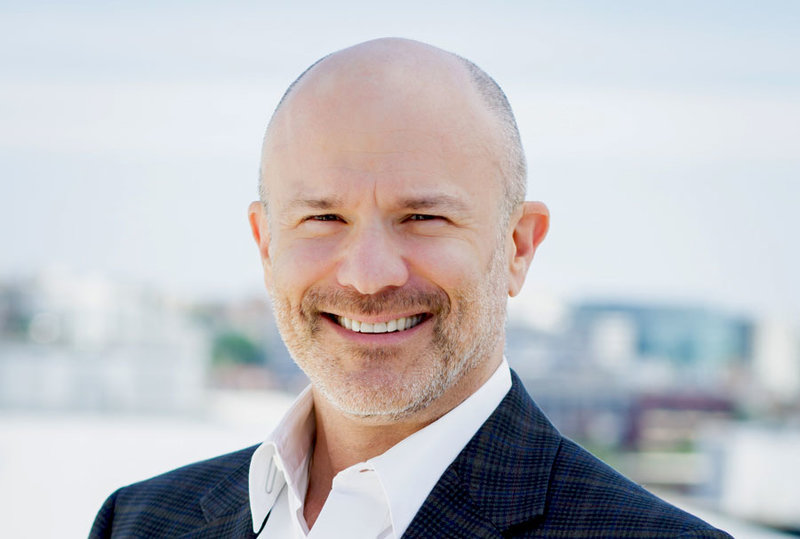Insight
Public image limited: the role of PR in pharma
Appearance is everything, at least that’s how the saying goes, and for pharma companies maintaining a positive and trustworthy reputation isn’t easy. So how does Big Pharma establish and keep its public image in check, and how do companies recover when things go very wrong? Chris Lo finds out.
T
he pharma industry operates at the sensitive intersection between medicine and money. While pharmaceutical products save countless lives every year around the world, an array of controversies – ranging from opioid addiction crises and product safety issues to allegations of anti-competitive industry collusion – have cast a shadow of suspicion over the entire sector.
In most polls gauging the public’s perception of various industry sectors, pharma can be found hovering at or near the bottom of the table. In the US, where privatised healthcare and insurance premiums have put patients at the sharp end of complex and sometimes brutal market dynamics, public views towards drugmakers could scarcely be dimmer.
In Gallup’s latest Work and Education poll released in September, the pharmaceutical industry ranked dead-last among all major industries based on public attitudes. Around 58% of Americans had a negative view of the industry, while just 27% felt positive about the sector.

Eric Dezenhall, CEO of Dezenhall Resources. Image courtesy of Dezenhall Resources.
Controversy and communication
To some extent, the nature of the pharmaceutical industry’s work has always provoked strong feelings and drawn stern criticism. But with high-profile political figures like Bernie Sanders and Elizabeth Warren taking Big Pharma to task while campaigning for the Democratic nomination in 2020, there has never been such tension around the industry, and especially its pricing.
“Pharmaceuticals are the only product that people believe they are entitled to,” says Eric Dezenhall, CEO of Washington DC-based crisis management firm Dezenhall Resources, which specialises in shepherding its clients through public relations disasters. “It’s an extension of health, so there’s a sense that I am owed my health, why should I have to pay for it? So much of my business, I see people who are angry with companies about their products. That’s not the case here. People really want pharmaceutical products – they just don’t want to pay for them.”
Pharmaceuticals are the only product that people believe they are entitled to.
To put it mildly, the pharma industry has a difficult task in the field of PR. With complex science and economics to discuss with a highly sceptical audience, not to mention the whirlpool of information (and misinformation) that is social media in the 21st century, the challenge of effectively promoting new treatments while warding off potentially ruinous criticism is extreme.
“One of the challenges is that healthcare companies now have to sell more than the product,” says Philip Lucas, medical writer at Inklab Medical Communications, a healthcare PR agency with offices in Dublin and Belfast. “So communicators like myself must show that the industry is building and creating solutions that are beyond just a tablet or a pill.”

Philip Lucas, medical writer at Inklab Medical Communications.
Striking the right tone
For everyday communications, such as relaying trial results or extolling the clinical benefits of a novel therapy, one of the most obvious keys to effective marketing is to identify the intended audience and tailor communications to their level of expertise and media consumption habits, which will differ widely between, say, pharma’s traditional expert audience or the general public.
“I think that’s really key to producing good communications pieces, in terms of how they consume information, demographics, age, sex,” says Lucas. “That will allow you to effectively choose the channels you use. The main issue sometimes is just not knowing the target audience, and not tailoring the message to the audience. I’ve seen some companies have reproduced quite complex data and sent it out into the public domain, where I think it will just fall on deaf ears.”
The main issue sometimes is just not knowing the target audience, and not tailoring the message to the audience.
Pharma firms routinely contract external PR agencies like Inklab to supplement their own communications departments and support the rollout of key strategic messages. For Chad Hyett, executive vice-president at New Jersey-based medical PR firm MCS Healthcare Public Relations, setting the right tone between a pharma client and their agency is vital.
“We need to be fully on-site with the clients,” he says. “Some clients love that, and other clients are resistant but they come around to it. We are at the table and we make that expectation very clear upfront, because otherwise that’s how you lose clients. You’re not connected to the broader team and you don’t understand the broader vision and you don’t immerse yourself in their business. You become a vendor rather than a partner.”

Chad Hyett, executive vice-president at New Jersey-based medical PR firm MCS Healthcare Public Relations
Unlocking clinical benefits through discussion
The rise of social media has had a massive impact on the nature of corporate messaging, turning one-way communications into an open discussion. Pharma, like many highly regulated industries, has been wary of engaging with a potentially hostile audience in the uncontrolled and highly public battlegrounds of Facebook and Twitter. Nevertheless, the social media horse has already bolted, and there’s no use closing the stable door now. The dilemma for drugmakers has become how to use these platforms, and who to engage.
“People want to hear back from a pharma company on social media, just like they want to hear back from [fast food chain] Wendy’s,” says Hyett. “We’ve failed to put the mechanisms in place, and it’s all risk-driven. But there’s a pathway and I think some companies are getting a little better at doing that.”
It’s also about having clarity on the objective of digital communications within the social media landscape. Hyett notes that social media exchanges are best suited to listening to customers rather than simply promoting your product, and striking the right chord with patients can lead to benefits in research. Finding and retaining clinical trial participants is one of the industry’s most persistent problems, and it’s an area where effective communications can be a great help.
If you can communicate effectively to patient groups or the public, you’ll get a better response.
“If you can communicate effectively to patient groups or the public, you’ll get a better response, greater patient insights, and the opportunity to collaborate with patients and patient organisations in a transparent and ethical way,” Lucas says. “In the long term, this will lead to better trials, I think, and better patient outcomes.”
In terms of knowing your audience, patient advocacy groups have an increasingly powerful voice in the sector, and offer the prospect of genuinely productive collaboration with patients and caregivers in the appropriate disease areas. Pharma companies have long been prolific financial donors to patient organisations, but Hyett argues these relationships should be more open and less transactional.
“What I often hear from advocacy groups is that companies come in and they ask the patient advocacy groups, ‘How can you help me with my product or my messages?’” he says. “I think advocacy groups want more mutual collaboration here. There’s a lot to learn from each other, and collaborating to help [patients] needs to be the mindset, not how can we use patient advocacy groups as a channel.”
Crisis management: the sharp end of pharma PR
Of course, in the event of a major controversy or public relations crisis, peacetime practices tend to fall by the wayside in favour of whatever measures can reduce a company’s exposure to public opprobrium.
Dezenhall has worked in crisis management for more than three decades, and while he refuses to reveal contracts, the firm reportedly counts the likes of ExxonMobil, Michael Jackson’s legal team and pharma giant Eli Lilly among its past clients.
Recently-revealed bankruptcy documents from Purdue Pharma, which went bust in September after being implicated in the escalating US opioid addiction epidemic, reportedly also showed that the company has worked with Dezenhall Resources.
Dezenhall’s thinking contradicts many of the more sensitive views of his counterparts in PR, which should come as little surprise for a man who has been described as the ‘pit bull of public relations’, and whose role is more to do with damage limitation than bridge-building. In fact, Dezenhall doesn’t even see crisis management as part of the same field as PR communications.
I just don’t think being loved is going to happen until you start giving away your product for free.
“I don’t believe [crisis management] belongs in the PR industry; I believe it’s some combination of management consulting, journalism and psychiatry,” he says with a wry chuckle.
He sees dealing with a reputational crisis as closer to a political campaign than an ad campaign, and notes that executives often aren’t ready for the stark choices that must be made in the event of a sudden controversy, justified or not.
“There is a tendency to view crises as communications problems rather than conflicts,” he says. “I look at them as conflicts. I don’t think there are many misunderstandings here. I think these are fundamental conflicts that a lot of industries try to medicate as if they are just some misunderstanding.
“I always say to a client, ‘What do you want? Is the goal justice, revenge, money, to be loved?’ I think a lot of times clients want to be loved when I don’t think that’s really on the table. I think for the pharma industry, what you really want is to be attacked less, as opposed to being loved. I just don’t think being loved is going to happen until you start giving away your product for free and guaranteeing a 100% chance of success.”
Conflict comms
Similarly, Dezenhall describes exhaustive preparation as something the PR industry recommends “because they get to bill for it”, and while other PRs champion social media as a powerful tool for healthcare engagement, in a crisis he rejects such platforms for their volatility.
“Five years ago, any millennial wearing rectangular glasses who used the term social media was hailed as a genius,” Dezenhall says. “Now what I’m seeing is top executives calling me privately into their offices, shutting the door and saying, ‘This stuff may actually be the problem.’”
So what broad strategy does Dezenhall recommend for pharma companies in the midst of a PR crisis? The answer cleaves close to the traditional communications tenet of knowing your audience.
People don’t want to see data, they want to see people.
“I think the industry needs to think less about its reputation writ large, and more about all of the sub-audiences that it cares about,” he says. “What can be better is targeted communications designed to help you be attacked somewhat less. That’s actually more effective because it’s harder to attack someone you’ve been communicating with. But that’s not a very glamorous proposition. What most people want to hear is, ‘Let’s spend $70m on an ad campaign with little girls and puppy dogs'. Everybody just feels so good about it that nobody ever asks the question, is it effective?”
In the age of big data, Dezenhall also emphasises the merits of presenting a human face in times of crisis.
“I’ve got to tell you, the biggest problem I’ve had with pharma companies is finding an actual person who, in times of controversy, will actually dive in front of a camera and do combat if necessary. I think what happens is the individuals keep saying, ‘What’s in it for me to go on camera in the middle of a controversy?’ And that’s true because whoever goes on TV has a career problem. But people don’t want to see data, they want to see people. I’ve really had a problem with this, not just with pharma but with multiple industries – where are the human beings?”